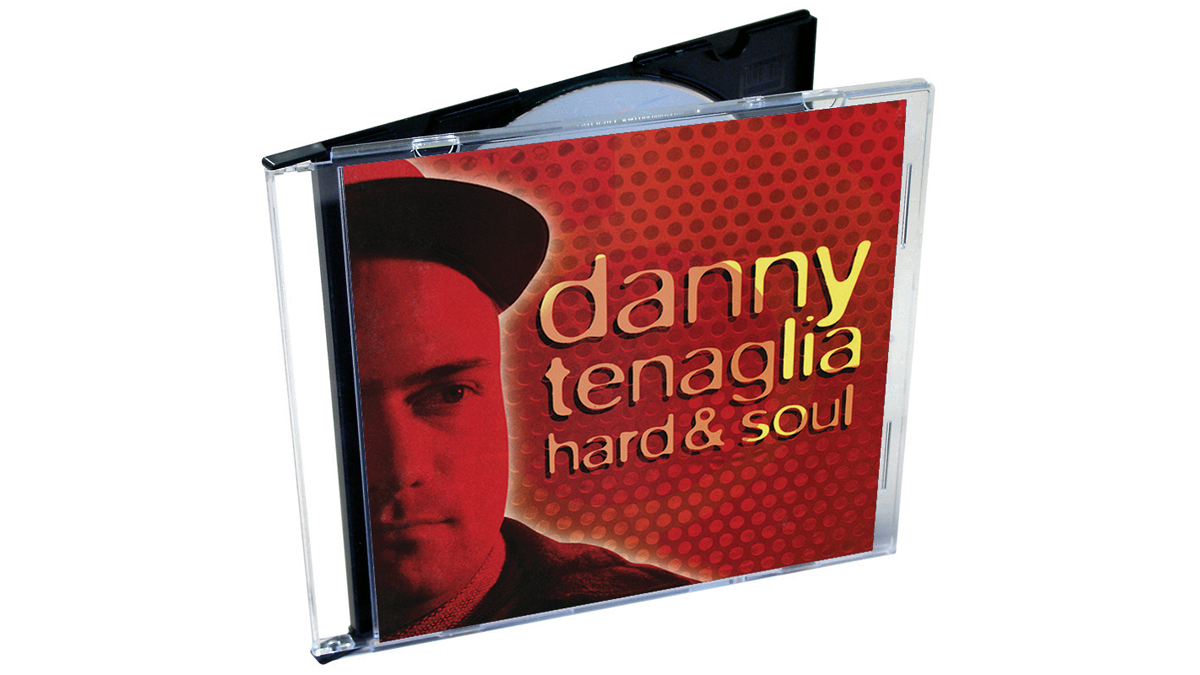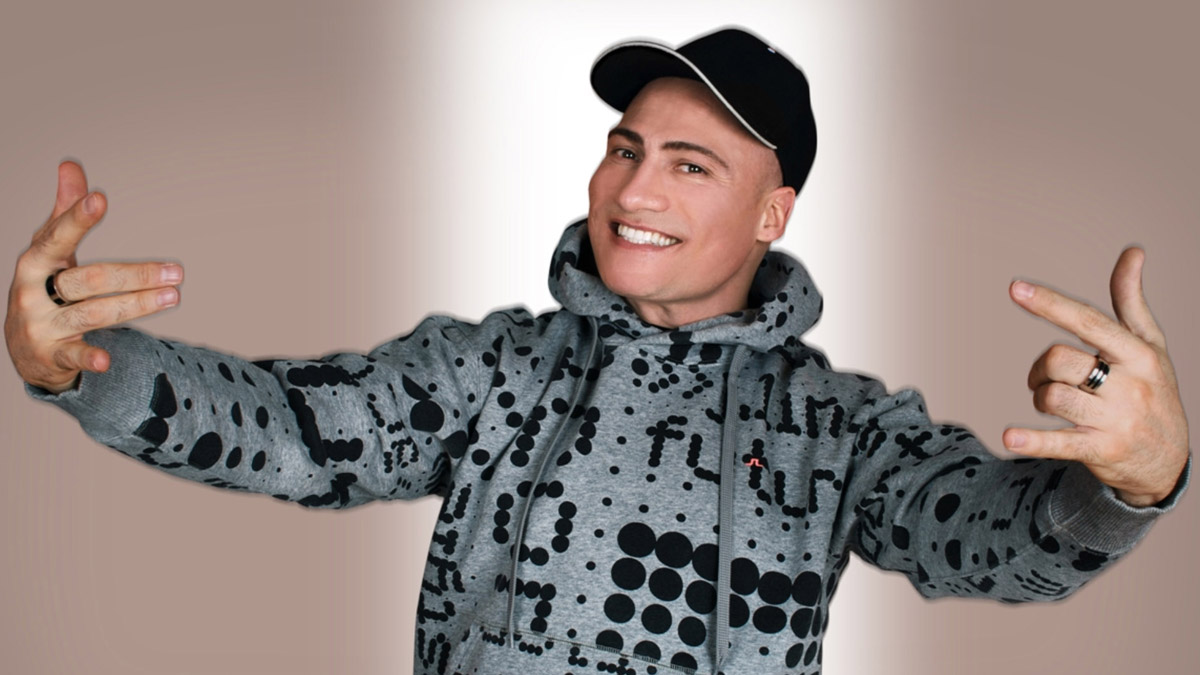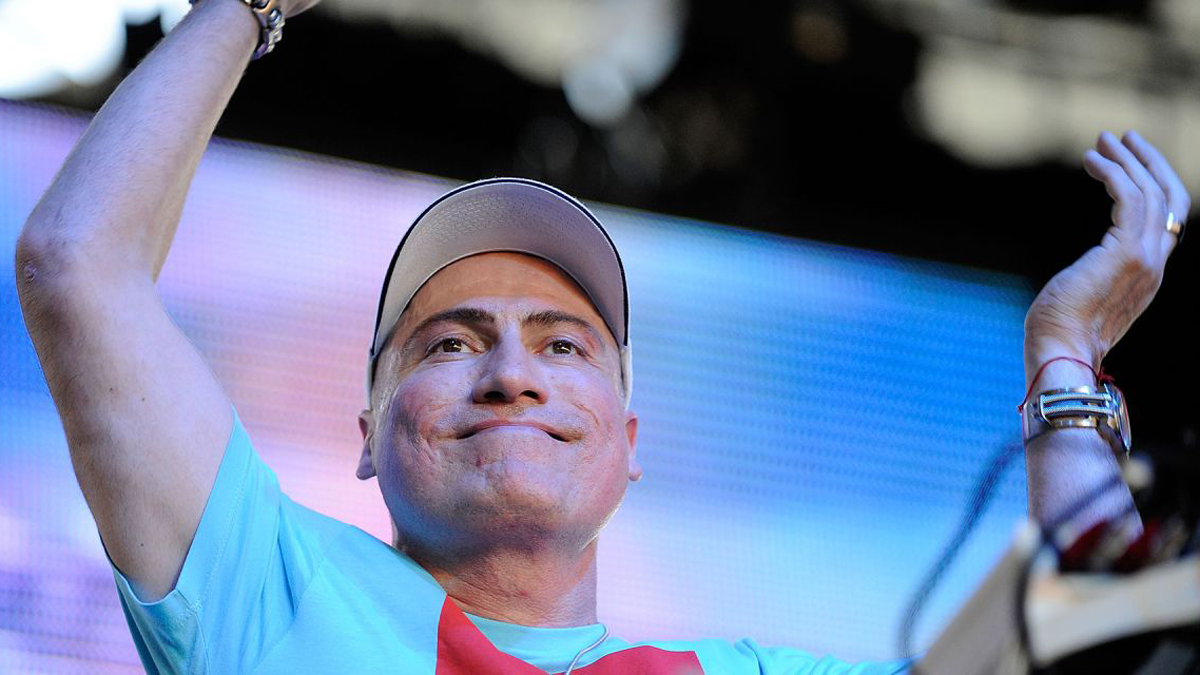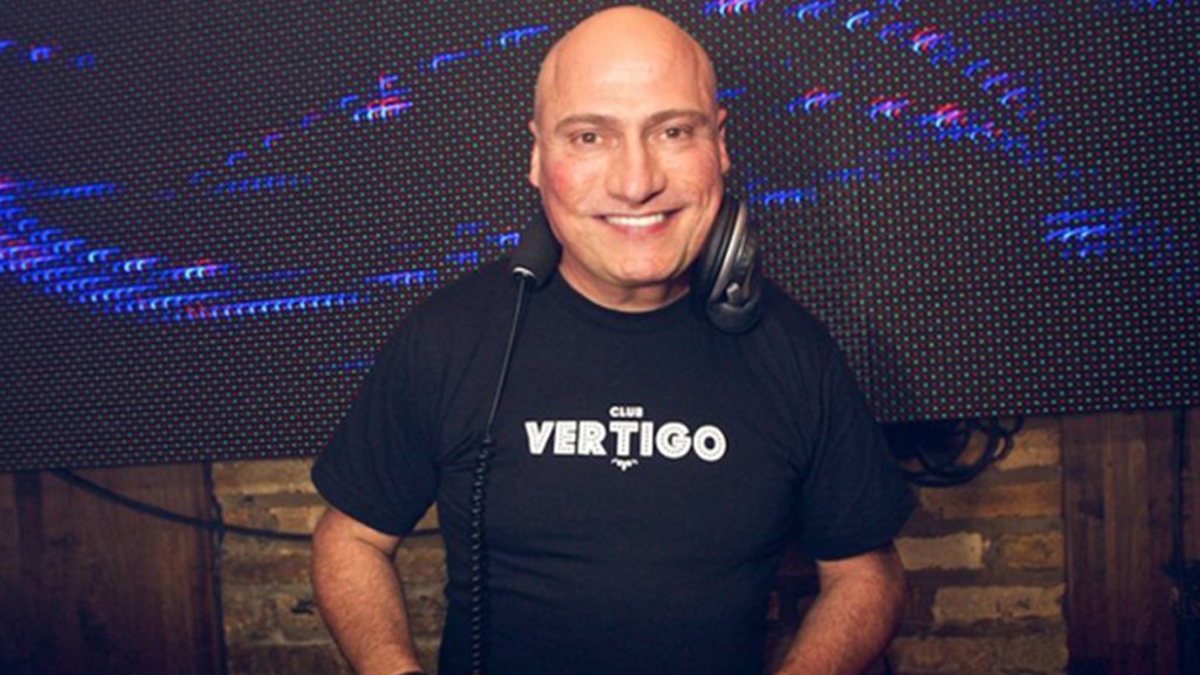Classic album: Danny Tenaglia on Hard & Soul
“I was trying to crack the puzzle. It took what it took.”

It’s the mid-’90s, and Danny Tenaglia is back in his native New York after doing a five-year stint in Miami, with a string of successful remixes to his name, and his production chops sharpened. His career-defining club residencies at the iconic Roxy, Twilo and The Tunnel are a little while off, but his signature musical style is starting to develop as he puts down tracks for his soon-to-be debut album.
It will perfectly mix up his disco roots, while embracing the tougher dance flavours that were emerging around him. The title would fit it like a glove: Hard & Soul.
“My whole lifestyle has been derived from that soulful stuff,” says Danny. “People like Tony Humphries, Larry Levan, and Jellybean Benitez, you know? But I wasn’t making a living playing that as a DJ. Things were changing. And I had to change.”
The first bridge towards this harder path came with his now classic track, Bottom Heavy. “That was the proof I could do it,” says Danny. “That stepped things up a bit and got me a little harder, but I didn’t want to totally go in that direction and forget my roots. So I balanced that with other tracks like Look Ahead.
“They’re like apples and oranges, but that’s what was coming from my heart. I wasn’t just gonna do an eight track album of just Bottom Heavy stuff, and not show my soulful side.”
Charged with that task he got his head down. It was time-consuming and expensive – a track could take three weeks, in studios that cost a grand a day, not counting engineer fees.
“I was trying to crack the puzzle, though,” says Danny. “It took what it took.”
Get the MusicRadar Newsletter
Want all the hottest music and gear news, reviews, deals, features and more, direct to your inbox? Sign up here.
So there he was, in awe of the modern DJs with that deeper, swingier, soulful house sound like Todd Terry and Roger Sanchez. But wanting to represent those harder jocks embracing techno, like Jeff Mills and Laurent Garnier.
“I loved all those DJs’ styles equally,” says Danny. “I was sort of like the man in the middle of all of them, though. I was somewhere between Kraftwerk and Chaka Khan here [laughs].
“That’s where I was in the mid-’90s, though. And that’s the album I had to make.”
Hard & Soul track-by-track with Danny Tenaglia
Yesterday & Today (The Register)
“I felt that it would be a very good track to open the album with. Look Ahead was a cover version, and Bottom Heavy was a little hard, and I wanted to open up a little more soulful than that.
“This was completely built around the flute solo, which was laid down by my keyboard player [Eddie Montilla]. I’d been hired in to do some remix work and had this solo, which didn’t work, so I used it here.
“It was originally much slower and made for a… I want to say a rap song. Like a rap/dance hip-house kinda thing. The label cancelled it and dropped the artist. They said, ‘Do what you want with your tracks’. I always loved that solo, and put a lot into it, so I rebuilt a new track around Eddie’s playing. That’s the foundation for this one.
“It was more of a personal production. I basically wrote all of it, with the exception of the solo. The only other one I considered opening the album with was World Of Plenty, because that was something that I’d done all by myself, too, except the live flute solo.”
Bottom Heavy (The Moody Pads)
“In 1992/3 Warner Bros asked me to remix a song by New Order called World (The Price of Love). They ended up turning it down, but I asked the label if I could keep all the parts that I did, and remove all New Order’s vocals and instruments. They agreed, and then I used those parts to make the track Bottom Heavy.
“The title of the track is derived from the sound of the bass in the club. You’d say, ‘That track is bottom heavy’, and mean it in a good way.
“Looking at the track listings for this album now I see The Moody Pads bit in brackets and I’m going, ‘What’s that?’. I think those were actually segues in each track, introducing bits. Sometimes I would let sections of one song introduce and reference another one. It was a little bit of a gimmick, I should say. Just like revisiting it in a theatrical way. Like you’d go, ‘Oh, he’s bringing that back in, but it’s from another section’. It’s just a bit of a section that reminisces on how the album started.”

Look Ahead (The Voice)
“This is a cover version of a track by Norman Connors’ Aquarian Dream. It was an album cut of theirs that I really liked.
“I got Carole Sylvan to perform on this version because I’d heard her vocals on a track called Voice of Freedom. She was a New Yorker and she was available, so I was really happy with that. She came to the studio to do her vocals. I’m getting flashbacks now [laughs].
“I’d given Carole the original beat before the studio session so she could rehearse it and get her own delivery down. I’d chosen this cover version especially for her to sing. I knew she’d nail it.
“The main thing was to try and sing it as close to the original as possible, because it wasn’t a hit record. I just wanted to get it across to a new audience, two decades later. I didn’t want her adlibbing the main choruses and verses. We left any jazz/scat stuff till after that. It was pretty cut and dry with the way the background harmonies came in. We didn’t want to change that, either.”
Wurk! (The Chant)
“This sprang from a version of a track I was doing for Right Said Fred that never came out. Back then they wanted you to do the ‘club mix’, the ‘dub mix’, the ‘radio edit’, and the ‘TV track’, in case they performed it live. There were so many demands on us as artists back then.
“Whatever the case, the track I made wasn’t really working for what Right Said Fred needed. Again, I put what I had on the back burner and thought, ‘One day I’ll make that into a track of my own’, and that’s exactly what happened here. I really like the way this one came out.
“By 1991 I had done remixes for groups like Right Said Fred, Shakespears Sister, and Seventh Avenue, with a cover of The Love I Lost. It’s funny to listen back to that stuff now. But I got hired to do a solid ten or so tracks, back then.”
World Of Plenty (The MIDI Moog)
“This has that amazing live flute by my engineer, Dana [Vlcek]. I haven’t seen him in ages…
“I wrote the lyrics, and Scott White sang them. I’m not really a lyricist, but I wanted to give it a shot.
“The penthouse to Axis Studios, where we were recording, had a balcony. It was amazing to go outside 16/17 storeys above the city, with amazing views of Manhattan. I was up there, thinking about what I could write for this track, looking up going, ‘God. Give me a sign…’ [laughs].
“I needed to come up with lyrics. That’s when the phrase ‘world of plenty’ came to me, stood on that balcony, looking out.
“Obviously there are hints of The Jacksons in there too, with the ‘sunshine/moonlight’ bits, so there was a play off their words, as well.
“Musically, this is on that much slower tempo. It was just me showing this side, as well – this funky little white boy in here. It would have been nice to get Stevie Wonder to play on it, but you know… [laughs].”
Come Together (The Chorus)
“I just wanted to do a ‘come together’ type track, for the dancefloor. Scott [White] did the vocals in the same session as the last track. He just put some lyrics together about coming together and stopping all the hate.
“This track, like most of them on the album, is eight or nine minutes in length, too. That was the style back then. Even some of the remixes I’d done could have stretched up to 13 minutes in length.
“I was just looking back to where I’d come from as a DJ, starting 43 years ago, in 1976. We had all that Giorgio Moroder, Cerrone, Ritchie Family outlook… everything was connected over 16 or 17 minutes of a side of an LP.
“I wasn’t just thinking of trying to get it all done in a few minutes. Back then DJs were playing long versions, so we made long versions.
“I’d make tracks like this, though, where there would be a part in the middle of the song where you could either mix out or let it continue on till the end, so it worked for everybody.”

Ohno (The Air Raid)
“This definitely has that ‘tribal factor’. The drum sample really inspired it. I was just talking about this track with somebody yesterday, actually. If you go to the WhoSampled site it says that I sampled Martin Circus’s Disco Circus to make this, but I didn’t!
“It has that ‘Hey'! Hey!’ thing in there, but I didn’t get it from his record. I actually went out and bought ‘sounds from around the world’ type records, and African chants records, and got it from there. There was something from within the context of an acapella that went ‘Hey'! Hey!’ and I sampled it from there and cut it up.
“I also sampled some [sings] ‘Oh no no no’ stuff, but I couldn’t tell you the rest of what they’re saying. That was off some rap song from the early ’80s. It wasn’t very good, but it had this little acapella chant in it and I took that.
“I’ve played that track to people and they’ve gone, ‘Oh my God! I’ve jumped rope to that!’ [laughs]. I’m like, ‘You know that sample?’ I didn’t, until I dug out the 12” record and sampled it.”
$ (That’s What I Want) (The Register)
“The original thing that made me want to do this cover version [made famous by the Beatles] was the punk rock version by The Flying Lizards. I always thought that was a fun record to drop when I was a young DJ, to just be different.
“It would get people’s attention, back then. It was novelty, but it was about having fun. It was the era where I could get people to sing along just by dropping the volume out on the mixer.
“I got [drag queen] Roxy to do vocals on this. She had a record out with Louie Balo [The Ride Committee] called Get Huh, that I liked. One of the girls that sort of managed me at the time had a record out with Roxy so they introduced me.
“It was like, ‘Wow!’ Roxy is like this 7ft tall guy. What a personality.
“It was a fun idea, and novelty on top of novelty – like, ‘Let’s bring Roxy in to do the Flying Lizards cover...of a Motown record’ [laughs]. It was a little bit all over the place – Motown, the Beatles, Flying Lizard… then Roxy. Great to end the album on.”

In the studio with Danny Tenaglia
“I went to Giant Studios in New York a great deal. They had an SSL console. It wasn’t state-of-the-art, but they had one really good room. I did my tracking there.
“I also used François Kevorkian’s Axis Studios – a legendary building. Back then it was 100% 48-tracks, 2” tape, and syncing the machines.
“I used to use a Roland MicroComposer or a Roland D-50, but when I hired [Frankie Bones collaborator] Tommy Musto to help me as a programmer he turned me on to the Akai S950. That became my main instrument for sampling sounds, drums, and loops.
“The other main bits were the SP-1200 drum machine, and an Oberheim Matrix 1000 synth, which was a pivotal sound piece for me. I still have my Korg Trinity – that was a big controller. It had the proper weighted keys – great when I got a professional keyboard player in.
"Then I had all the usual stuff like a 909, and all that. I’ve kept it all. I rarely part with anything.”


Future Music is the number one magazine for today's producers. Packed with technique and technology we'll help you make great new music. All-access artist interviews, in-depth gear reviews, essential production tutorials and much more. Every marvellous monthly edition features reliable reviews of the latest and greatest hardware and software technology and techniques, unparalleled advice, in-depth interviews, sensational free samples and so much more to improve the experience and outcome of your music-making.
"At first the tension was unbelievable. Johnny was really cold, Dee Dee was OK but Joey was a sweetheart": The story of the Ramones' recording of Baby I Love You
"Reggae is more freeform than the blues. But more important, reggae is for everyone": Bob Marley and the Wailers' Catch a Fire, track-by-track




![PRS Archon Classic and Mark Tremonti MT 15 v2: the newly redesigned tube amps offer a host of new features and tones, with the Alter Bridge guitarist's new lunchbox head [right] featuring the Overdrive channel from his MT 100 head, and there's a half-power switch, too.](https://cdn.mos.cms.futurecdn.net/FD37q5pRLCQDhCpT8y94Zi.jpg)





